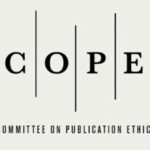Nanayakkara Uditha Sandali Dissanayake✉![]() , Daham Tharanga Jayawardana
, Daham Tharanga Jayawardana![]() , Sandani Buddhima, Hasini Mapatuna and Hisho Ravilojan
, Sandani Buddhima, Hasini Mapatuna and Hisho Ravilojan
Department of Forestry and Environmental Science, Faculty of Applied Sciences, University of Sri Jayewardenepura, Gangodawila, Nugegoda, Sri Lanka.
Received: 2 Feb 2023/ Revised: 1 Mar, 2023/ Accepted: 8 Mar, 2023
(✉) Corresponding Author: sandalidisanayake@sci.sjp.ac.lk
Abstract
Recent research focuses on the effectiveness of particular laterite grain sizes of thermally modified laterite soil as an adsorptive material for getting rid of copper and chromium subatomic particles out of polluted water in lab settings. By auger drilling, the pure laterite soil was extracted from tropical weathering conditions. Collected soil samples were washed and dried by air. Soil was crumpled to create 2 mm and 0.5 mm grain sizes. By heating the laterite at 100 °C, 200 °C, 300 °C, and 400 °C for three hours in a muffle furnace, thermally activated soil was arranged. Batch studies were carried out at an ambient temperature and the natural pH was used to determine the adsorption states of copper and chromium ions for the thermally activated laterite soil. According to the findings, 2000C thermal-activated laterite soil has higher removal efficiencies. The maximum removal efficiency of copper and chromium ions was given at 90 minutes of optimal contact time for both 2 mm and 0.5 mm grain sizes. However, the optimum dosage of 0.50 g of thermally activated soil of 2 mm and 0.5 mm grain sizes was responsible for significant removal efficiency. Thus, thermal-activated laterite soil can remarkably remove copper and chromium from water at natural pH levels.
Keywords: Adsorption, Thermally modified Laterite, Copper, Chromium, Optimum conditions
References
Bailey, S. E., Olin, T. J., Bricka, R. M., & Adrian, D. D. (1999). A review of potentially low-cost sorbents for heavy metals. Water Research, 33(11), 2469-2479.
Beauvais, A. (1999). Geochemical balance of lateritization processes and climatic signatures in weathering profiles overlain by ferricretes in Central Africa. Geochimica et Cosmochimica Acta, 63(23-24), 3939-3957.
Council, N. R. (2000). Copper in drinking water.
Dissanayake, C. (1980). Mineralogy and chemical composition of some laterites of Sri Lanka. Geoderma, 23(2), 147-155.
Dissanayake, N. S., Pupulewatte, P. H., & Jayawardana, D. T. (2022). Formulation and Evaluation of a Laterite Soil Based Scrubbing Effect Herbal Cleansing Bar. Journal of Drug Delivery and Therapeutics, 12(1-S), 91-96.
Faur-Brasquet, C., Reddad, Z., Kadirvelu, K., & Le Cloirec, P. (2002). Modeling the adsorption of metal ions (Cu2+, Ni2+, Pb2+) onto ACCs using surface complexation models. Applied surface science, 196(1-4), 356-365.
Fu, F., & Wang, Q. (2011). Removal of heavy metal ions from wastewaters: a review. Journal of environmental management, 92(3), 407-418.
Jayaram, K., Murthy, I., Lalhruaitluanga, H., & Prasad, M. (2009). Biosorption of lead from aqueous solution by seed powder of Strychnos potatorum L. Colloids and surfaces B: Biointerfaces, 71(2), 248-254.
Lopez, J. M., & Fred Lee, G. (1977). Environmental chemistry of copper in Torch Lake, Michigan. Water, Air, and Soil Pollution, 8(4), 373-385.
Mahagodage, S., Udagedara, D., & Jayawardana, D. (2018). Use of Laterite Soil as a Filter Material to Remove Copper from Aqueous Solution.
Maiti, A., Thakur, B. K., Basu, J. K., & De, S. (2013). Comparison of treated laterite as arsenic adsorbent from different locations and performance of best filter under field conditions. Journal of Hazardous Materials, 262, 1176-1186.
Mitra, S., Thakur, L. S., Rathore, V. K., & Mondal, P. (2016). Removal of Pb (II) and Cr (VI) by laterite soil from synthetic waste water: single and bi-component adsorption approach. Desalination and Water Treatment, 57(39), 18406-18416.
Nayanthika, I., Jayawardana, D., Bandara, N., Manage, P., & Madushanka, R. (2018). Effective use of iron-aluminum rich laterite based soil mixture for treatment of landfill leachate. Waste Management, 74, 347-361.
Pham, T. D., Nguyen, H. H., Nguyen, N. V., Vu, T. T., Pham, T. N. M., Doan, T. H. Y., Ngo, T. M. V. (2017). Adsorptive removal of copper by using surfactant modified laterite soil. Journal of Chemistry, 2017.
Priyantha, N., & Bandaranayaka, A. (2011). Interaction of Cr (VI) species with thermally treated brick clay. Environmental Science and Pollution Research, 18(1), 75-81.
Radian, A., Michaeli, D., Serban, C., Nechushtai, R., & Mishael, Y. G. (2010). Bioactive apo-ferredoxin–polycation–clay composites for iron binding. Journal of Materials Chemistry, 20(21), 4361-4365.
Rani, K. S., Sarma, G., Naidu, K. G., & Ramesh, K. (2019). Adsorptive removal of chromium by modified laterite. Materials Today: Proceedings, 18, 4882-4892.
Rani, K. S., Srinivas, B., GouruNaidu, K., & Ramesh, K. (2018). Removal of copper by adsorption on treated laterite. Materials Today: Proceedings, 5(1), 463-469.
Rengaraj, S., Yeon, K.-H., & Moon, S.-H. (2001). Removal of chromium from water and wastewater by ion exchange resins. Journal of Hazardous Materials, 87(1-3), 273-287.
Van Dang, S., Kawasaki, J., Abella, L. C., Auresenia, J., Habaki, H., & Kosuge, H. (2008). Removal of arsenic from synthetic groundwater by adsorption using the combination of laterite and iron-modified activated carbon. Journal of Water and Environment Technology, 6(1), 43-54.
Visa, M., Bogatu, C., & Duta, A. (2010). Simultaneous adsorption of dyes and heavy metals from multicomponent solutions using fly ash. Applied surface science, 256(17), 5486-5491.
Wang, Q., Cissoko, N., Zhou, M., & Xu, X. (2011). Effects and mechanism of humic acid on chromium (VI) removal by zero-valent iron (Fe0) nanoparticles. Physics and Chemistry of the Earth, Parts A/B/C, 36(9-11), 442-446.
Yang, R., Aubrecht, K. B., Ma, H., Wang, R., Grubbs, R. B., Hsiao, B. S., & Chu, B. (2014). Thiol-modified cellulose nanofibrous composite membranes for chromium (VI) and lead (II) adsorption. Polymer, 55(5), 1167-1176.
Yoon, J., Amy, G., Chung, J., Sohn, J., & Yoon, Y. (2009). Removal of toxic ions (chromate, arsenate, and perchlorate) using reverse osmosis, nanofiltration, and ultrafiltration membranes. Chemosphere, 77(2), 228-235.
Zietz, B. P., Dieter, H. H., Lakomek, M., Schneider, H., Keßler-Gaedtke, B., & Dunkelberg, H. (2003). Epidemiological investigation on chronic copper toxicity to children exposed via the public drinking water supply. Science of the Total Environment, 302(1-3), 127-144.
How to cite this article
Dissanayake, N. U. S., Jayawardana, D. T., Buddhima, S., Mapatuna, H. and Ravilojan, H. (2023). Thermally modified laterite soil by means of an adsorptive material for copper and chromium elimination from polluted water. Chemical and Environmental Science Archives, Vol. 3(1), 8-14. https://doi.org/10.47587/CESA.2023.3102
Licence Article Metadata
This work is licensed under a Creative Commons Attribution 4.0 International License.
![]()












